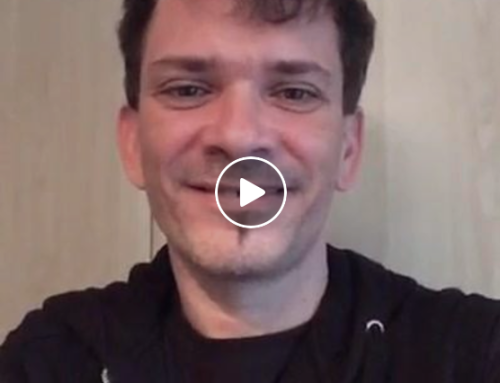As a parent and a life coach I was not able to get myself to make that leap and bring coaching into my family circle. Seeing the benefits in the lives of my clients should have been reason enough to share this treasure with my kids, but I wasn’t. I believe the main reason was, old habits die hard. I was brought to my knees, not by my child, but by the magnitude of what she was dealing with, even at a young age. My usual parenting style was not working, I gave up and put on my coaching hat.
Raising a family is no small matter and one day I was overwhelmed by all their needs and I was focusing on their schooling. I was concerned about my preteen daughter in particular. Last school year she didn’t seem to be enjoying school or doing very well with her grades. I knew she needed to start with a change in her attitude and in her ability to learn how to relax and enjoy school.
I was failing as a father, or so I felt. I was frustrated that she was so worried and down. She seemed to be constantly moping and not wanting to do her homework or put more effort into learning. I went into a usual grade checking phase and she just went downhill, tears and all. My frustration rose and I was sure I was gonna lose it. No, I lost it. I just had to walk away and take time to cool down.
Before this final incident I kept getting the gnawing feeling that I needed to change tactics and use the coaching tools I’ve been using so successfully with clients and in my business. In fact I had clients asking me if and how I was using it in my family, with my children. Somehow in my thoughts, I knew it would work but I was resistant to it because I wasn’t sure how to adapt it to family scenario.
Now it was time. I was not able to control myself. I was emotional and concerned and it was showing. As I was standing alone in my room, counting to ten only served to take the edge off. I called my daughter in and sat down to talk with her. I started by exploring how things were for her and in her mind. I stuck strictly to open questions and I even took back my words and rephrased questions when I slipped. Open questions are those commonly starting with the words what, where, when, who, and which.
I decided to follow what is known as the GROW model from coaching and let it go to work from me. I started by asking her what her GOAL was. We then took time to explore her REALITY, where things were at practically speaking and where she was in her thinking, in relation to what she had as goals. Moving on to the O in GROW we looked at what her OPTIONS were for reaching her goal and changing her situation. Finally we were able to set some clear action steps and time frames for accomplishing them, making a clear WAY FORWARD.
It soon became apparent that she had some mindsets and beliefs about herself and her ability and circumstances which were keeping her in a negative frame of mind and not able to separate facts from perceptions and feelings.
If you are interested in the details here they are:
Goal
As we explored how she felt and the way she saw things, we could also clearly see what she was expecting and wanted. First, she wanted to be faster with her work. She’d fallen behind on some subjects, because she missed some schools for unavoidable reasons. Second, she wanted to raise her grades to a certain percent which she felt would be acceptable. Third, she felt she wanted to understand the subjects better and not have to struggle with it so much, since her older sister seemed to be doing so much better in this regard.
Reality
When those ideals and goals were clear, we set out to study the perception she had of not achieving those goals, with the intention of being able to set a time frame for reaching them. As we looked over the records and the facts, it became apparent the she was not behind that much and was in fact only slightly behind in two subjects, which would be easy to remedy with a little hard work.
Then as we looked at facts about her grades she was actually at or above the minimum target grade she was shooting for, in all but 2 subjects, and that would not be too difficult to improve on since she had time to do so in the second semester.
Looking at her ability to retain and learn was something a little more challenging to overcome but it came down to simply realizing that sometimes that is the process of learning and it’s okay to fail as long as we keep trying. She simply needed a new mindset about school.
Options
This part was very practical as we explored how long it would take to make the adjustments, when she could find time to put in the extra work etc.
Way Forward
It was clear that she still had a way to go in order to change her situation, some catching up to do, getting better grades, and retaining what she was studying better. By the end of our conversation we had put together a clear positive goal statement with all the details that she was aiming for clearly listed in positive present tense terms with gratitude. “I am so happy and thankful now that I am… and have… and am… .” This positive statement is not some fanciful positive thinking, “all you have to do is think and it with happen”. It was a very practical statement, tied into a clear action plan, which she began to take immediate action on.
My daughter realized something very important that day. It’s not the circumstances that dictate how we feel and what results we are getting, it’s our thoughts. This was not a lesson I crammed down her throat. We went through a coaching process and she was able to come to the conclusions and find the answers without any coaxing from me. Simply put we took time to communicate.
It all came down to taking a look at her feelings and thoughts, and understanding what she wanted. Then she began to understand how to change her thinking in order to be empowered to take action and achieve the results she was looking for. More importantly I realized that until that point I was not providing her with a model or sample of what I expected of her. In fact I learned more about my own thinking process and need to control my choice of thoughts if I expect to be able to help my children have a head start in this tricky business of life.
Here are three tips for bringing the benefits of coaching into your family life.
- You can use a simple coaching model like the GROW model to guide your conversation with your children
- You can use open questions starting with words like what, where, when, who, and which, to keep your communication flowing.
- Of course in the end so much of it comes down to really listening. As you become a better listener your children we benefit and from the experience and you will be giving them a sample they can follow in their own lives.
Coaching is not rocket science. I believe that anyone can use many of the key elements in their personal and/or family life to help those they care about by simply being curious, listening and taking time to communicate.
Questions: What areas could you potentially use coaching to help your children or those you love and care about? Which tools have you found helpful in reaching clarity in your own life? You can leave a comment by clicking here.




